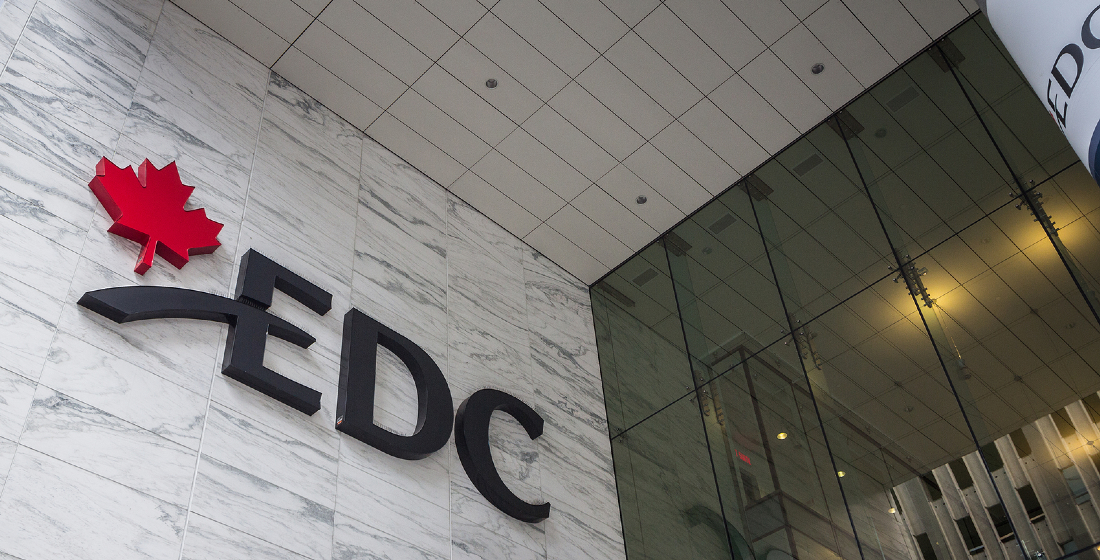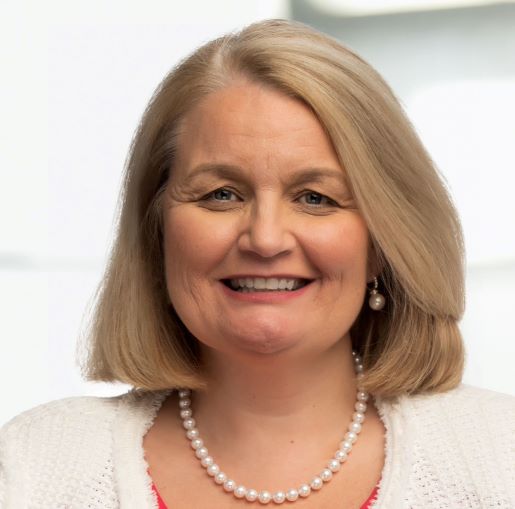EDC's Lavery on the need to speed OECD Arrangement reform
At TXF Global in Lisbon, TXF caught up with Mairead Lavery, CEO at EDC to outline the challenges and opportunities for Canadian exporters looking to tap into ECA support in the wake of the pandemic and the war in Ukraine and ongoing ESG imperatives. OECD Arrangement reform needs to move further and faster, she says.

TXF: How has EDC revised its mission statement in the wake of the pandemic and the war in Ukraine, in terms of policy and product evolution specifically?

Mairead Lavery (ML): In short, we're not adjusting our strategy. We’re still focusing on our goal to vastly increase Canada’s trade presence, but with a 2030 perspective. Events like Ukraine or our pandemic response certainly effect some tactics, but the wider strategy remains the same.
With respect to our pandemic response, as much as we talk about the negative side of it, there was the positive side, where ECAs showed they can step in during market gap situations. We also showed how quickly we can respond, too, that there’s more we can do in better times, whether building products in an agile manner or engaging our clients more to help meet their needs.
The Russia-Ukraine crisis is showing us that we need to be flexible with Canadian exporters who are now seeing increased interest in their products, particularly as it relates to food security and commodities.
TXF: What are EDC’s most active regions and sectors right now? And where are you seeing the most business flow?
ML: We’re definitely seeing a lot of activity in the agriculture sector – whether it's food processing, fertilizers, or related commodities. There’s lots of interest in that.
I would also say the pandemic really drove technology and technological change. There’s been lots of interest from buyers in Canadian technology, particularly around remote activity, sensing technology and with clean technology, especially those improving the operational emissions of organisations – something people around the globe are looking for help with now.
Canada has lots of great companies succeeding in cleantech, and EDC is extremely active there. Since 2012, we have facilitated about $20 billion in cleantech exports. Among our partners, we’re a leading financier of Canada’s cleantech industry, which has a very strong ecosystem backing it up.
In terms of regions, everyone's looking toward Europe, where the energy security question is really driving a focus on the speed at which Europe will electrify, change its energy sources and implement clean technology. And, as we all look to 2050 and what we’ll need to achieve net zero emissions, we’ll see a lot of interest in advanced manufacturing, robotics, AI, and data-linked technologies. So, it's a very exciting moment.
TXF: The OECD framework still needs to be reformed quite significantly, certainly in regards to climate and ESG. Where do you think the Arrangement can be modernised to better support your exporters and level the playing field?
ML: In short, we need to move further and faster. We need to move away from the belief that we need the perfect solution, achieved through negotiation, when what we really need are tools that are going to equip us today for a sustainable future. Then we can look toward adjusting these tools as the science and our understanding of our impact evolve.
This means simplifying and evolving the Arrangement and its tools to help our exporters. Step one is to sustainably increase ECA support for climate-related exports and investments.
One roadblock is the issue of fragmented guidelines and standards. There is a growing number of taxonomies and standards to carbon accounting and related disclosures, as well as setting science-based target approaches, as examples. The lack of alignment makes it more difficult to ensure we’re singing from the same song sheet and applying standards consistently, but it also leads to hesitancy to get started. So, as an ECA, we need to establish a common understanding to support our exporters effectively and sustainably in this rapidly evolving market. This is all why I'm very focused on the climate sector understanding. It serves as a step towards promoting climate-related activity within a common framework among ECAs.
I would follow that up with the Common Approaches [Common Approaches for Environmental and Social Due Diligence], which can help ECAs understand the ways in which we want to do business in relation to the Arrangement. It’s an important part of the song sheet, so to speak.
But this Arrangement isn’t up to date. Trade is very different in 2022 than it was in 2021 and 2019 pre-pandemic.
TXF: It's very interesting and it brings me to my next point about the need for ECAs to evolve and develop product and policy which at the same time needs both to be dovetailed with government level trade policy and linked to climate. How do you marry up those two different ‘mandates’?
ML: I'm very fortunate. I sit under the trade ministry in Canada within Global Affairs Canada, but I spend a lot of time coordinating with Environment and Climate Change Canada and Natural Resources Canada.
This coordination is critical. Canada is a trading nation and natural resources-based economy. We’re looking to increase our trade presence, so we're always going to be in support of global trade and Canada’s significant trade agenda. On the other side of the coin, we – EDC and the Government of Canada – have a net zero commitment. This year, EDC announced a Sustainable Bond Framework, and we're moving ahead with interim science-based targets and sustainable finance targets.
So, sometimes, our goals come up against other objectives. There isn't one silver bullet that's actually going to cut across all the ministries and provide a single answer. We’re going to need different things at different times. As an example, we're working on a critical mineral strategy which includes working with the Canadian mining associations on issues related to human rights and labour rights and how to move forward within complex contexts.
Another prominent example is Canadian companies in the solar industry, which are confronted with incredibly important challenges related to the environment and human rights. So again, it's how you chart that path to leading in international trade, while delivering on and being true to these critical ESG values.
I wouldn’t characterise this as a problem, but rather the complexities of the current context we must understand and work within.
TXF: That's a very interesting point there because ECAs do need to do more to help verify the veracity of a lot of these ESG deals in terms of technical screening procedures and such?
ML: Well, that's why the OECD’s Common Approaches is so important and why we have to remember to use the word sustainability a lot and it's a very valid word, but we have to think about the E, the S, and the G. You can't lose sight of one of those things as you try to deliver on another. Really, the question is, ‘how do you move all of this forward?’
Another channel of learning and influence is our proximity to exporters and their international activities. Through these partnerships, including other financial institutions, we can all move the needle on stronger and more robust due diligence.
TXF: And one that is enshrined in law and in environment.
ML: It depends where you're targeting. If you have the sustainable development goals in mind, then you have a different target. And if you think of human rights, it's the United Nations guiding principles on business and human rights, and approaches like the Equator Principles, if also looking at climate change. There are many different forums out there that are equally driving, for example, on free and prior informed consent. It is important that as an ECA, we maintain the Common Approaches as a standard providing clear guidance on what type of due diligence you need to be doing, aligned with internationally recognised standards.
TXF: So that means collective terminologies and definitions to help interpret these different frameworks? And would you be willing as an ECA to look at ESG-tied financings? In short, can you absorb a reduction in premiums given you have to cover your indemnity costs?
ML: Yes, we're already doing it. We offer sustainability-linked loans and linked lending. I mentioned earlier our Sustainable Bond Framework, which includes four types of bonds – green bonds, social bonds, transition bonds, and sustainable bonds.
The bonds set the tone and framework for prospective projects. Yes, they’re mechanisms for fundraising – but it's very clear the funds are going to be used in specific types of projects.
You and I, we’re speaking at Lisbon at the conference, where there's lots of discussions today on the panels about the carrot and the stick. If you listen to the private sector, we're going to have to put the carrot out there and incentivise people into these early-stage technologies, into these different jurisdictions, different projects, where they may not necessarily be yet.
And we’re probably going to have to use a little bit of the stick as well, through different mechanisms, like disclosures, permitting certain activities and banning others. So, yes, all of it is on the table.
TXF: And lastly, what are you guys doing for SMEs? I mean given the need to support small ticket transactions within export finance as big-ticket large-scale projects seem to win favour with most ECAs and banks for obvious reasons (because there's greater margins to be made). But how do you remedy these solutions given SMEs are the engine to most economies?
ML: Absolutely. Everyone talks about the large transactions when in fact most of our books of business are the small transactions. Almost 75% of EDC’s customers are small and micro-sized businesses.
TXF: Are you seeing a shift to suppliers’ credits?
ML: There is a slight shift. There's certainly more discussion on supply chain financing right now – trying to find export platforms that might bring smaller suppliers in with it. It is a very exciting moment. But the thing with small- and micro-companies is the process has to be extremely easy. It has to be very fast, and it has to be much less bureaucratic. So, for me, what are we doing?
We're trying to digitalise all our offerings or trying to make them very easy and very flexible. And we need to deliver those with partners: you don't want to call your bank and then have to call EDC after that to figure out how they can support. You want a one-stop-shop. For us, it means partnering with the right people, helping get our small companies out there, and getting them to grow beyond being an occasional exporter, and to think of trade as a way to grow their business.





